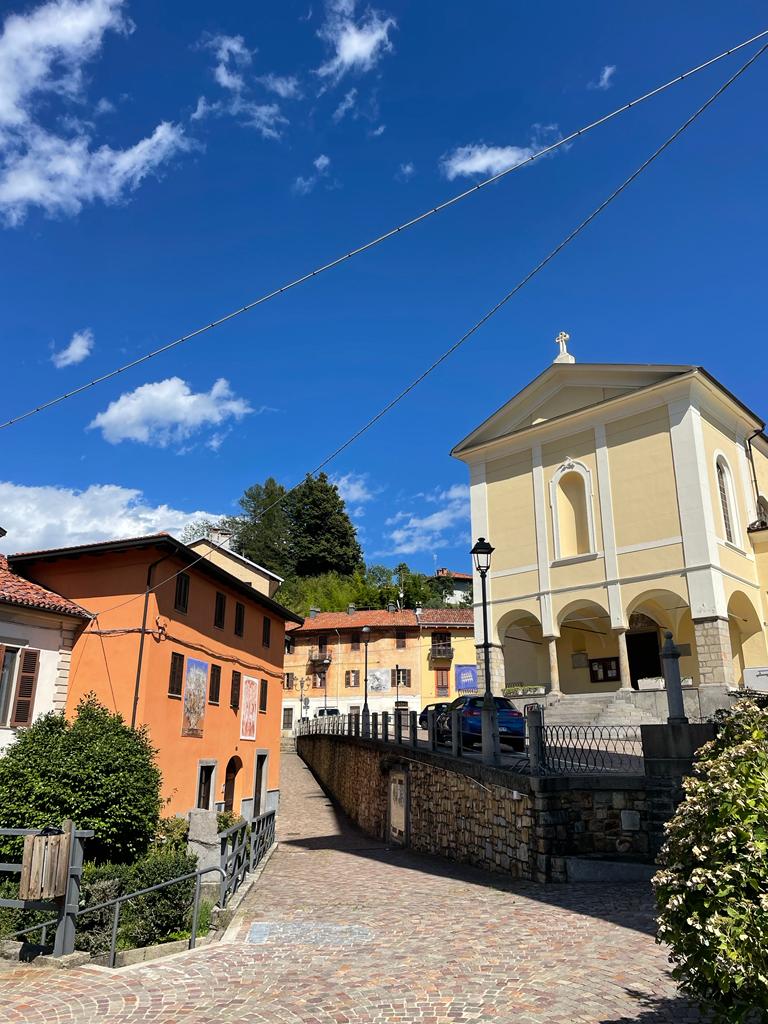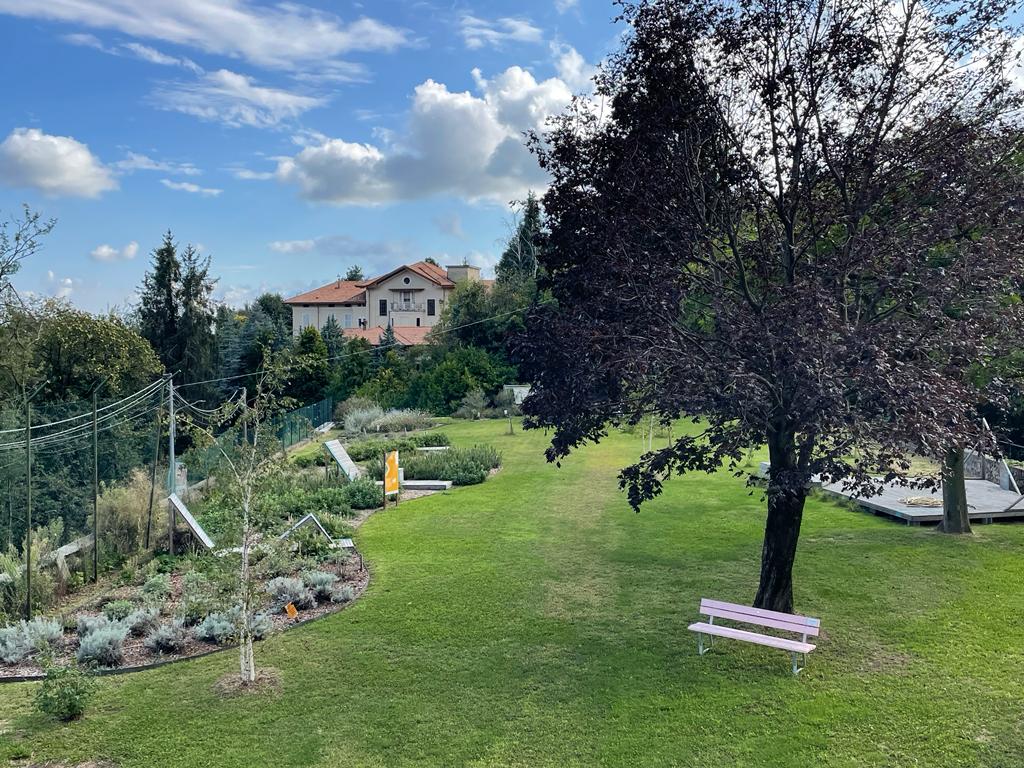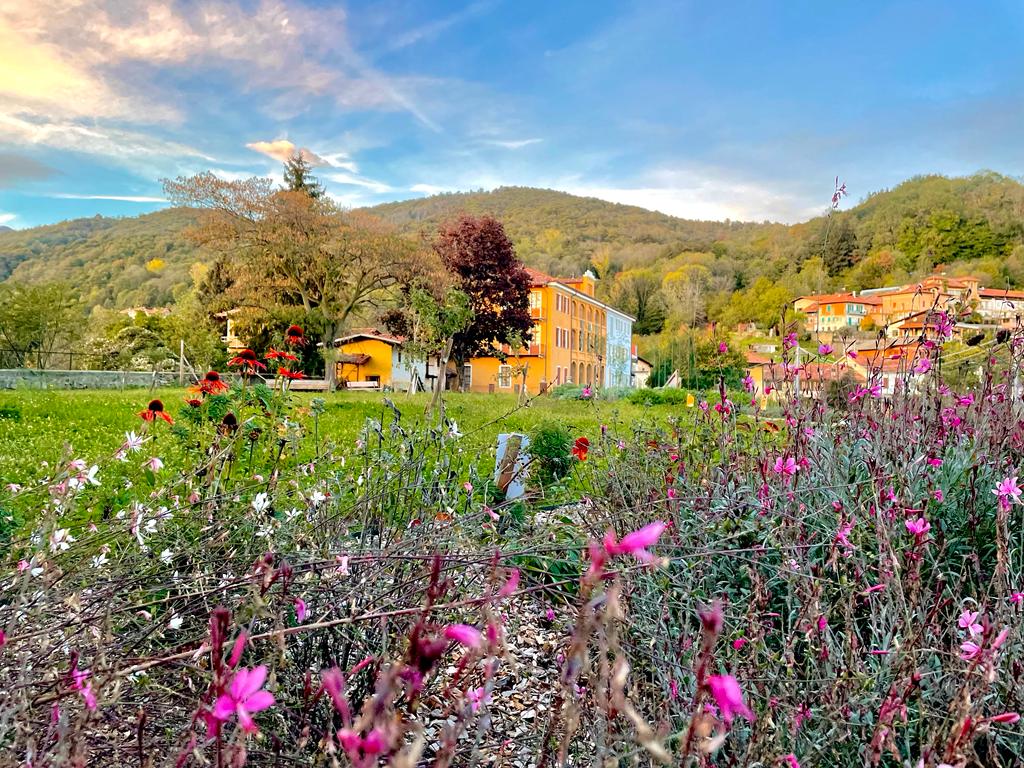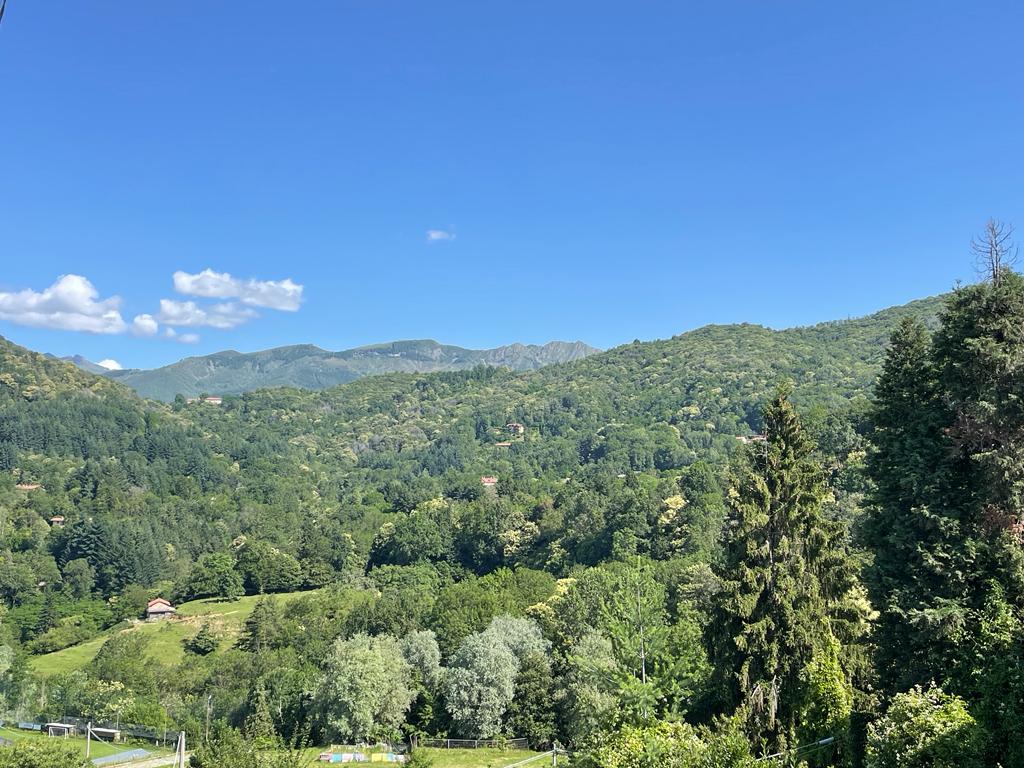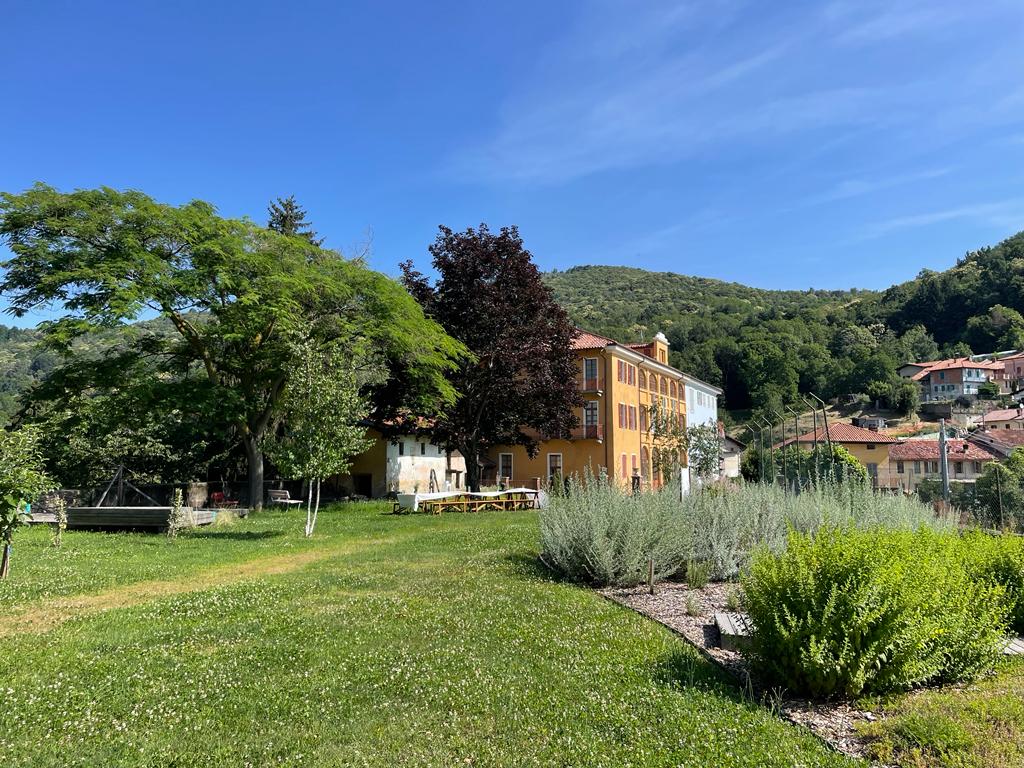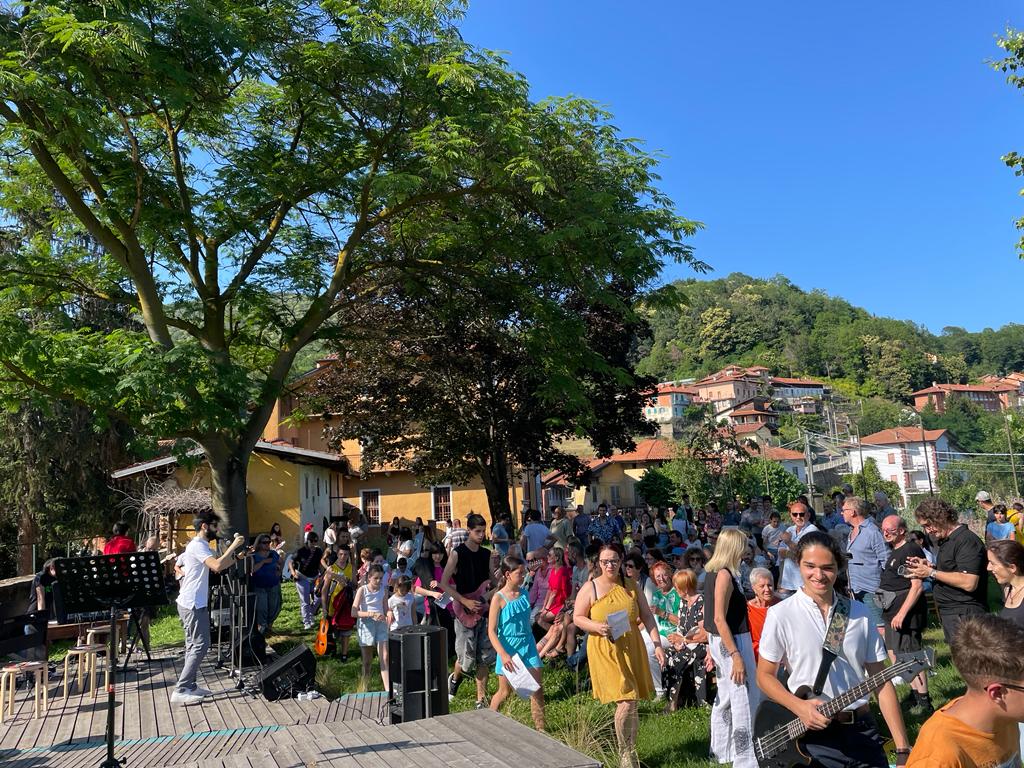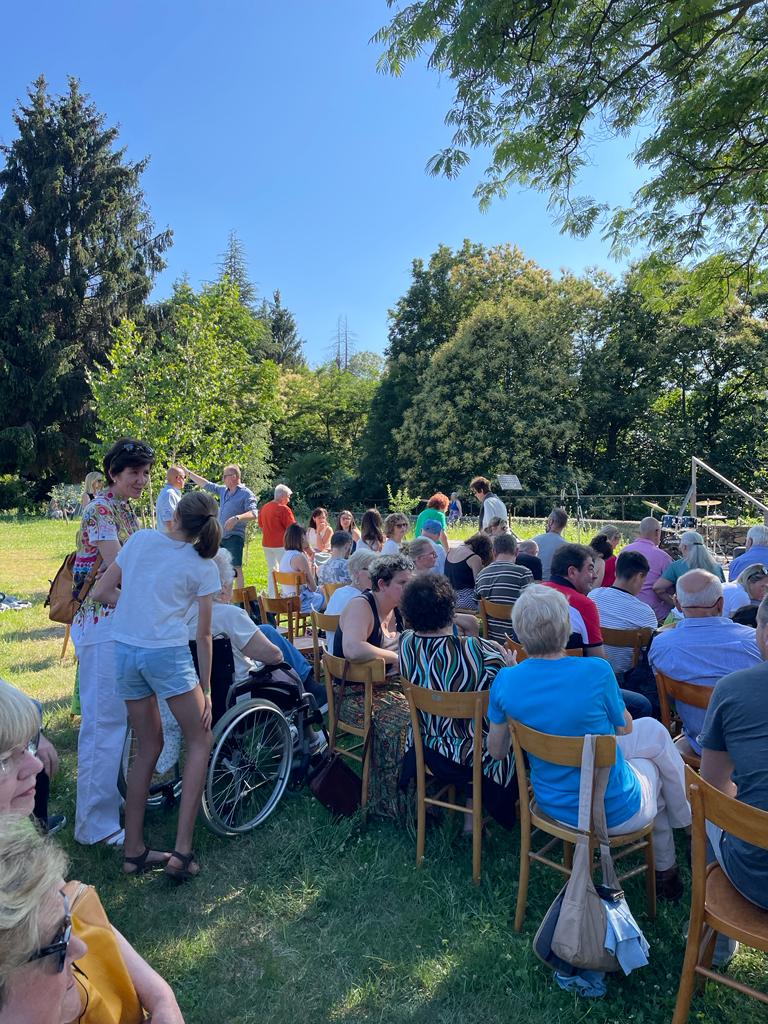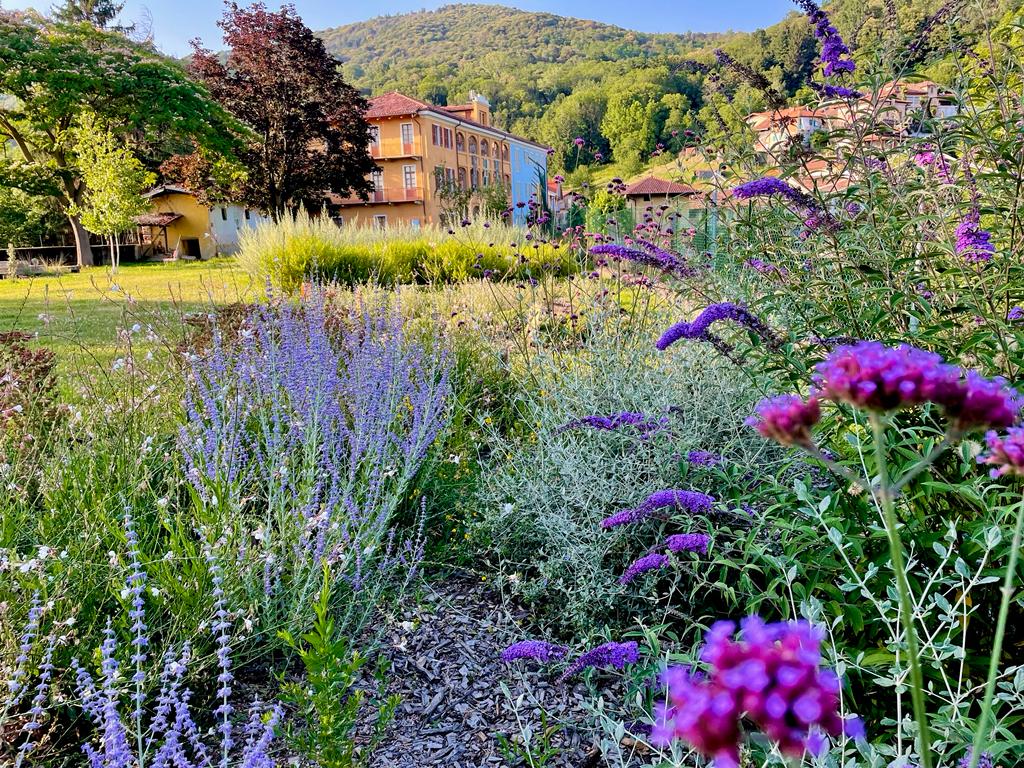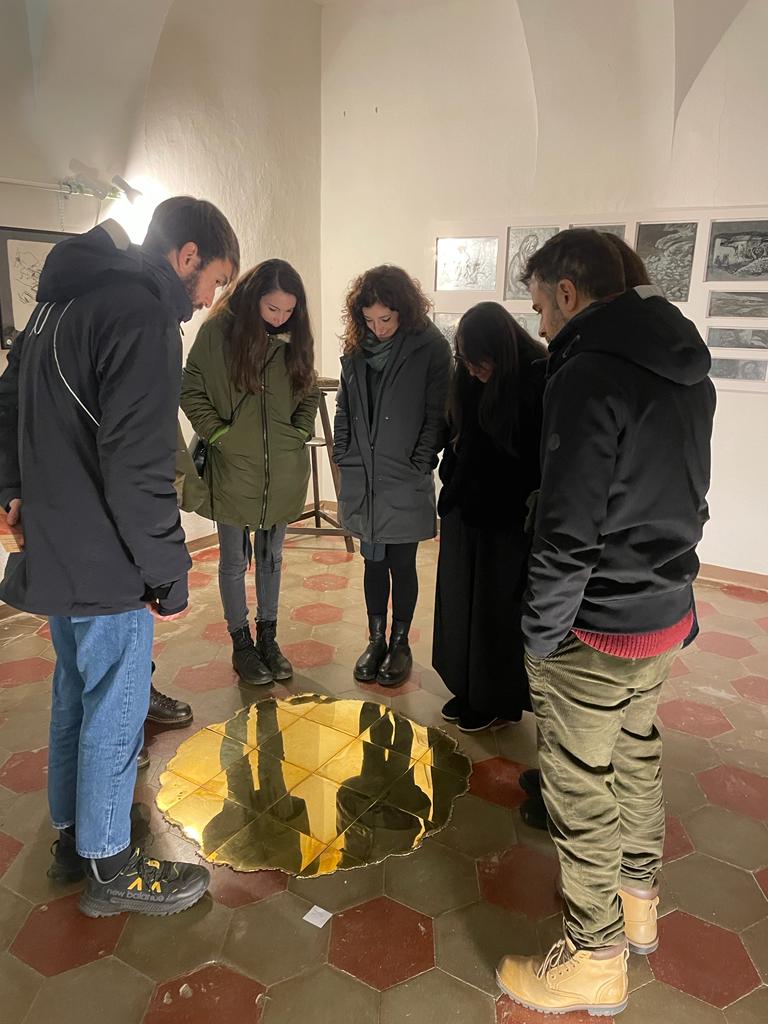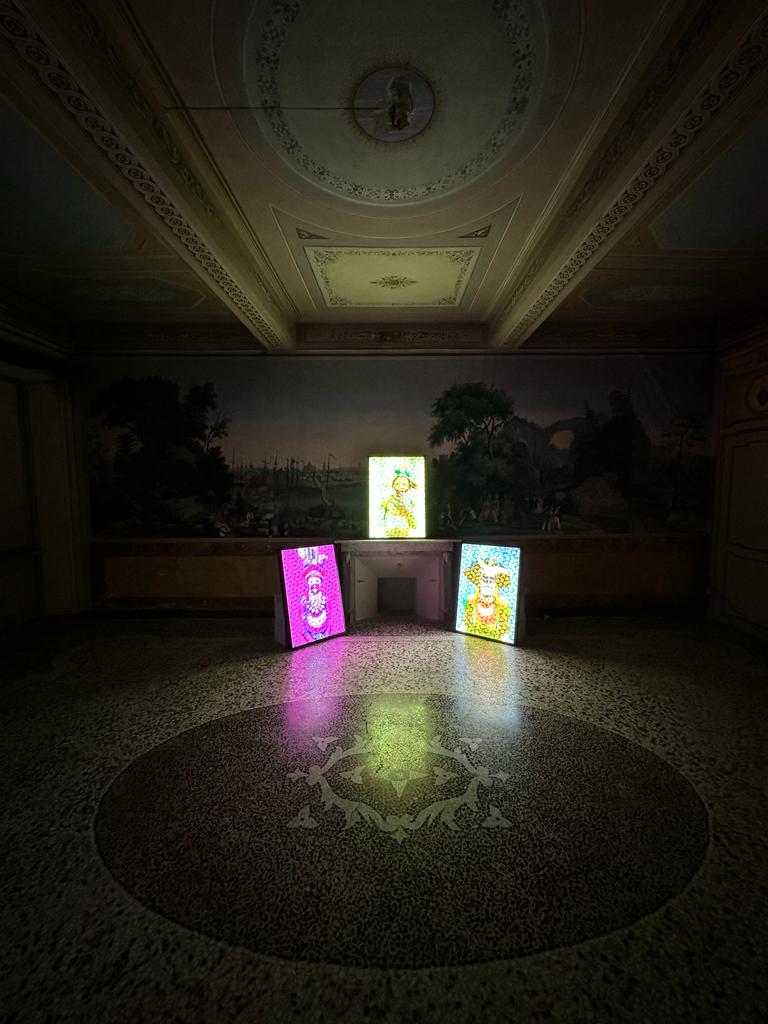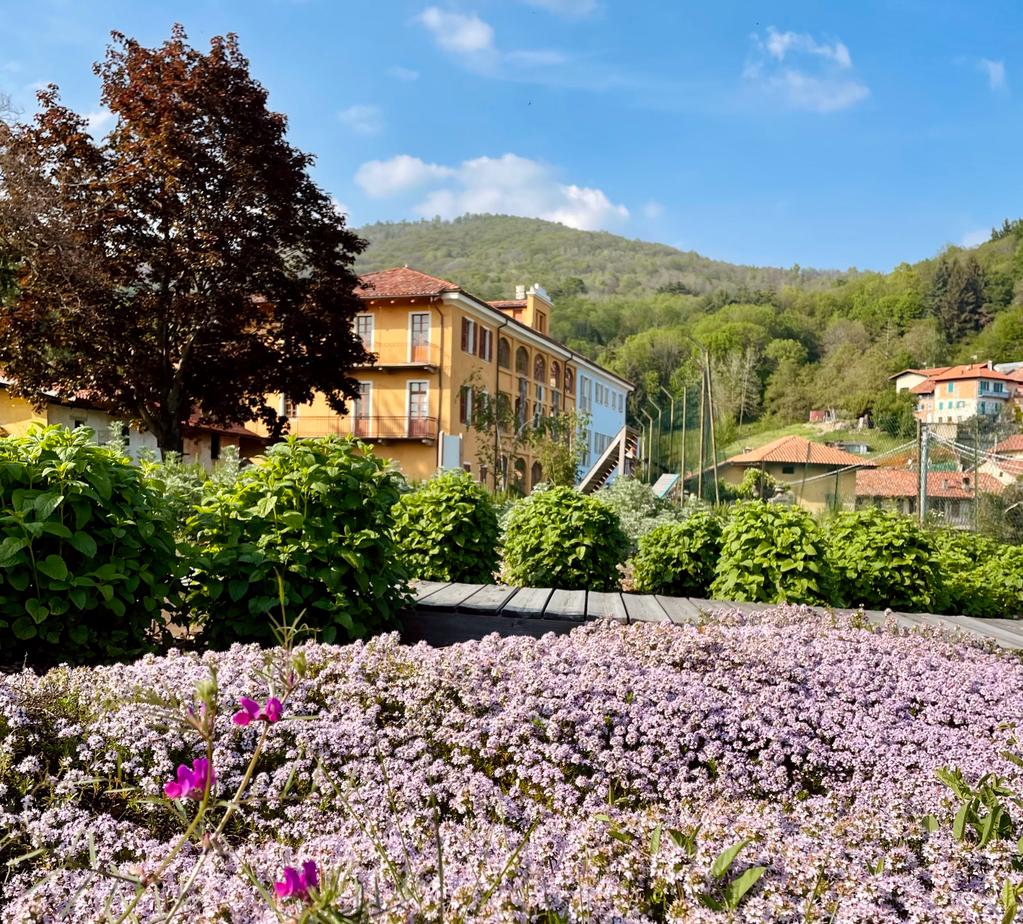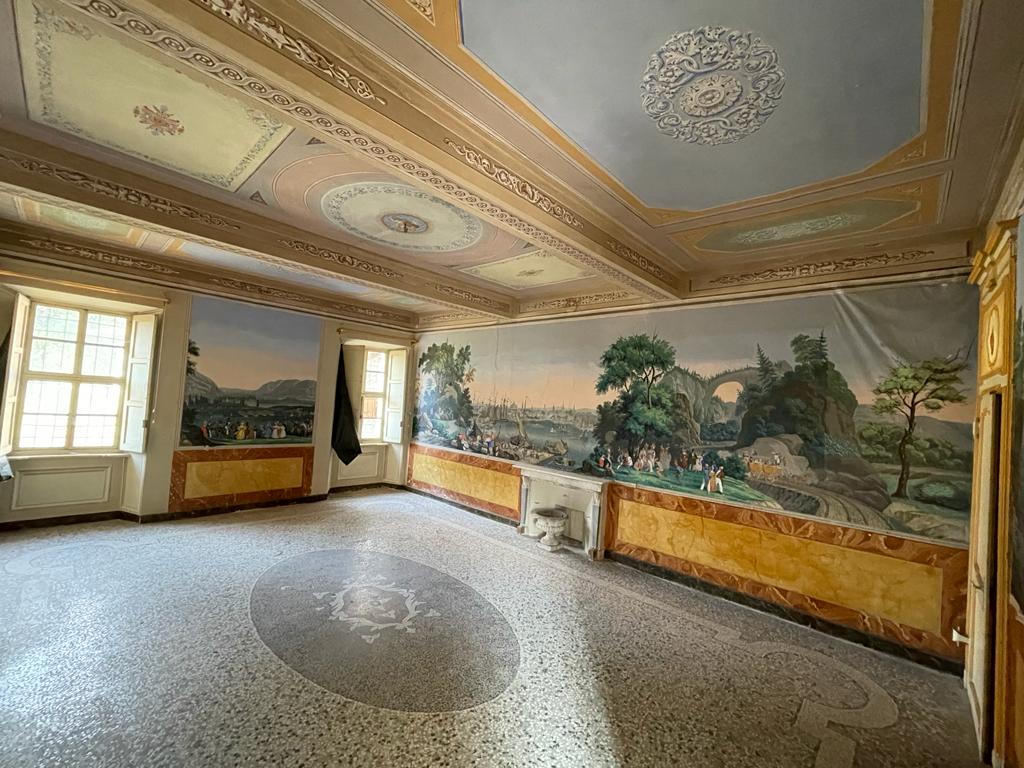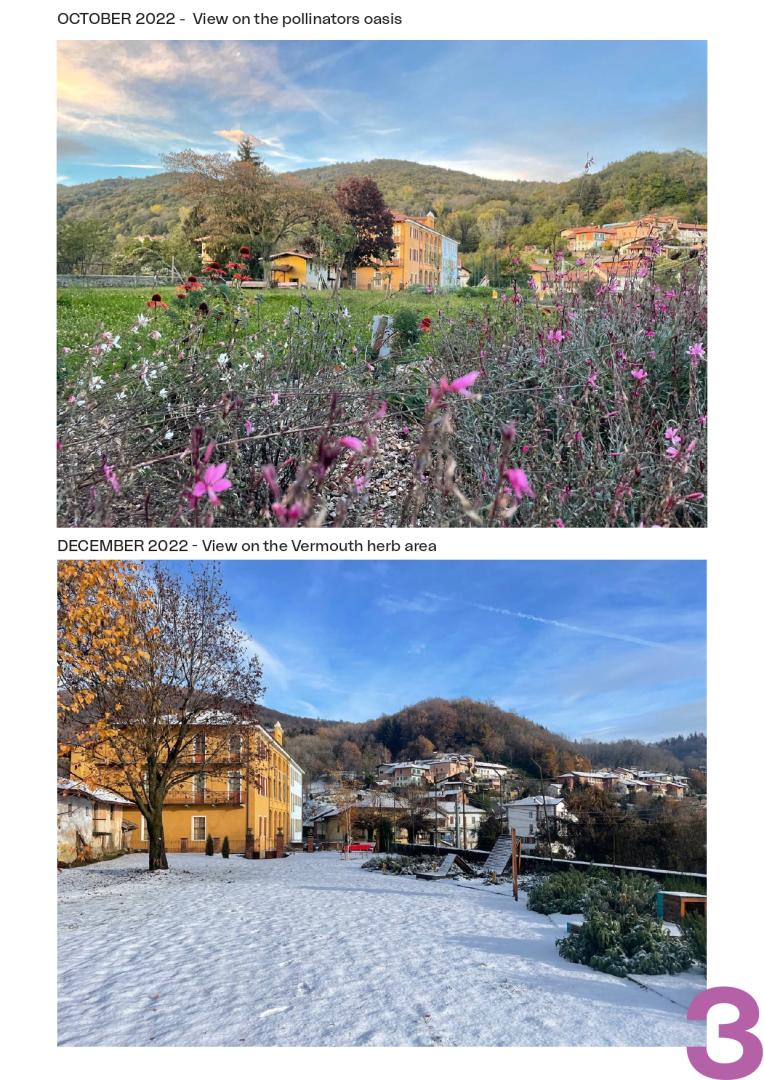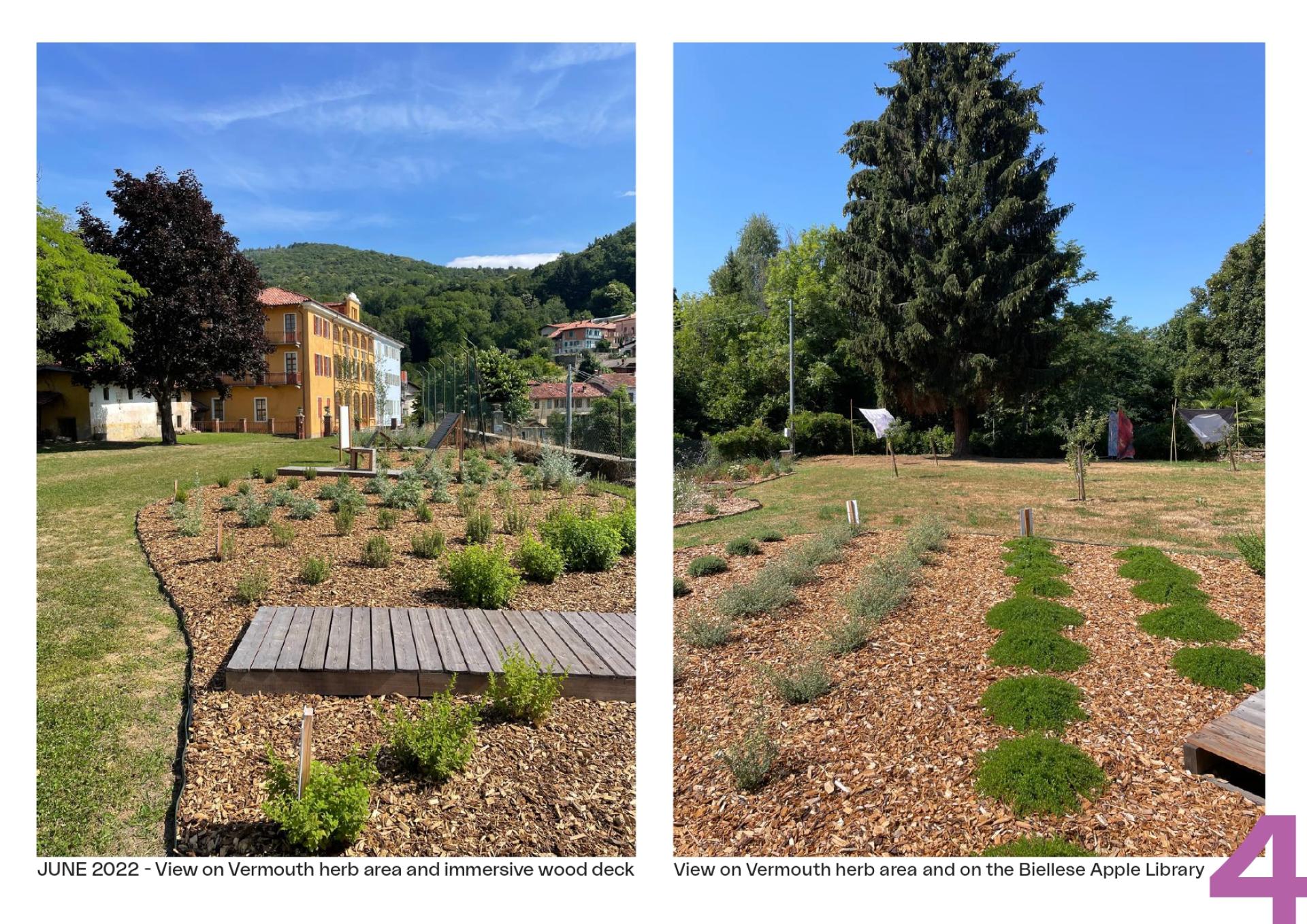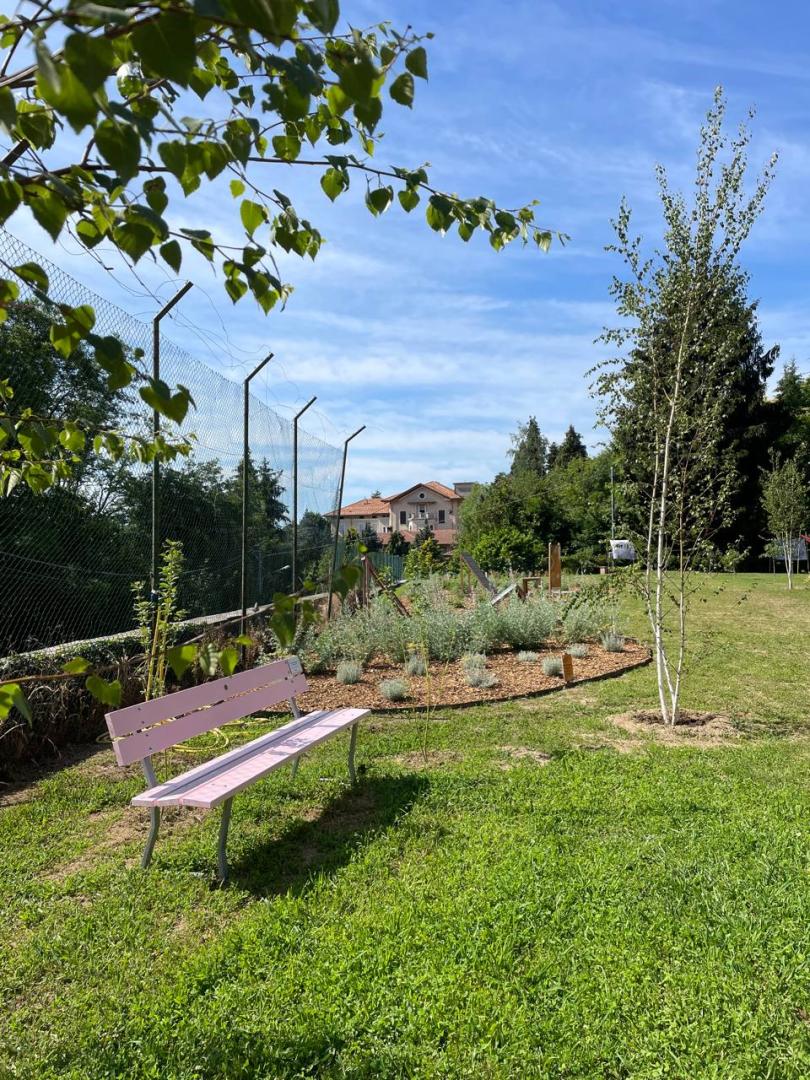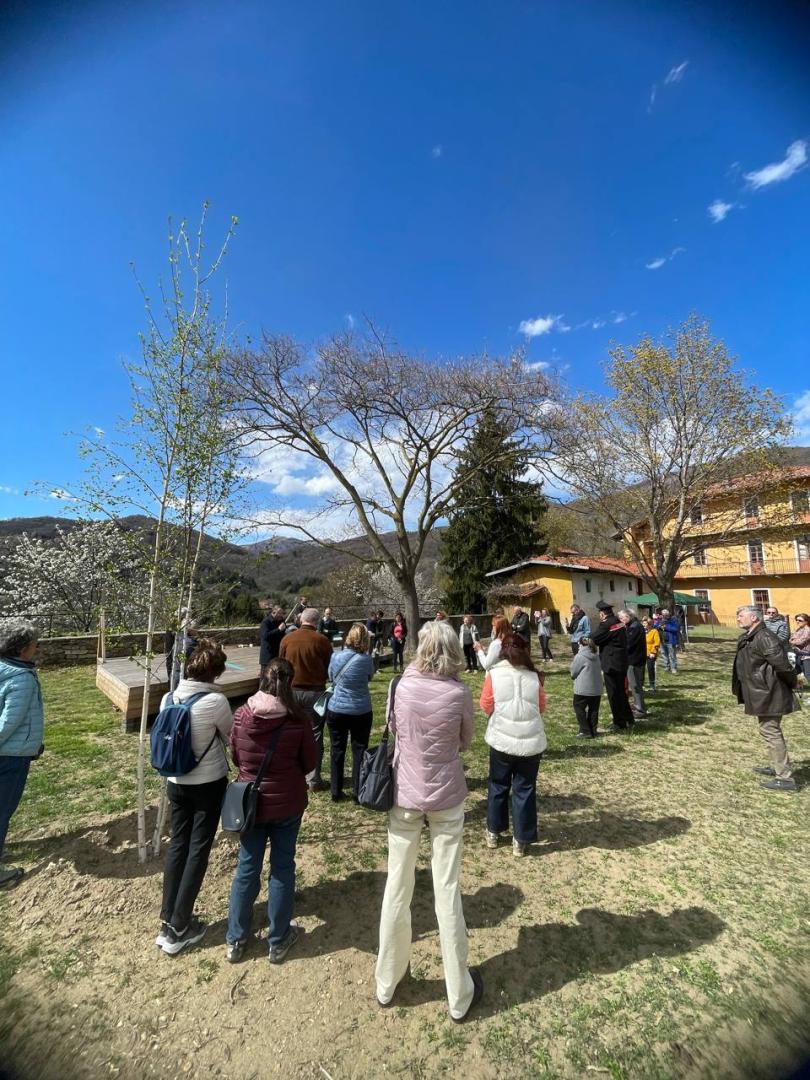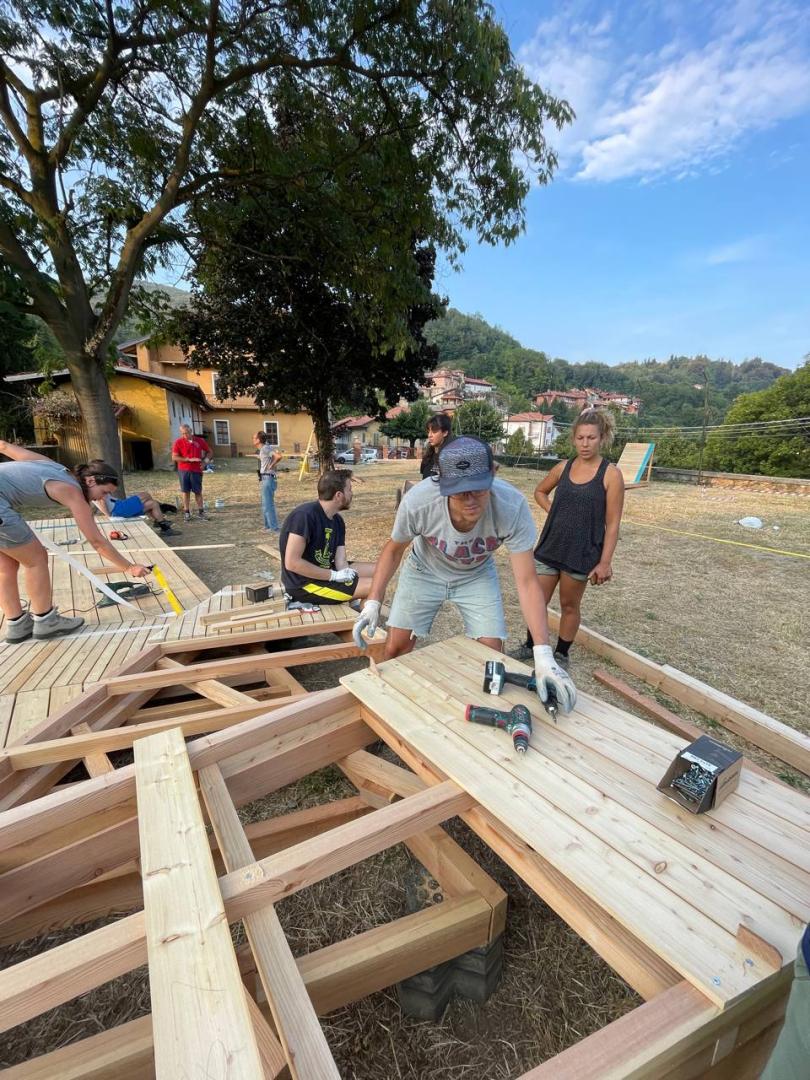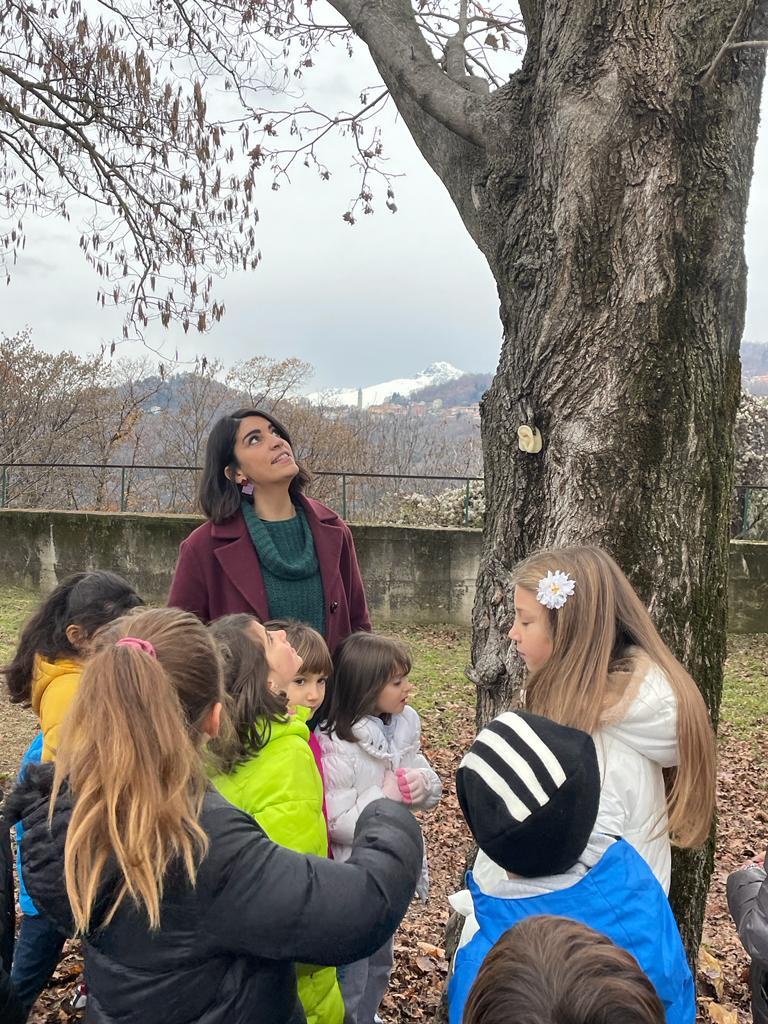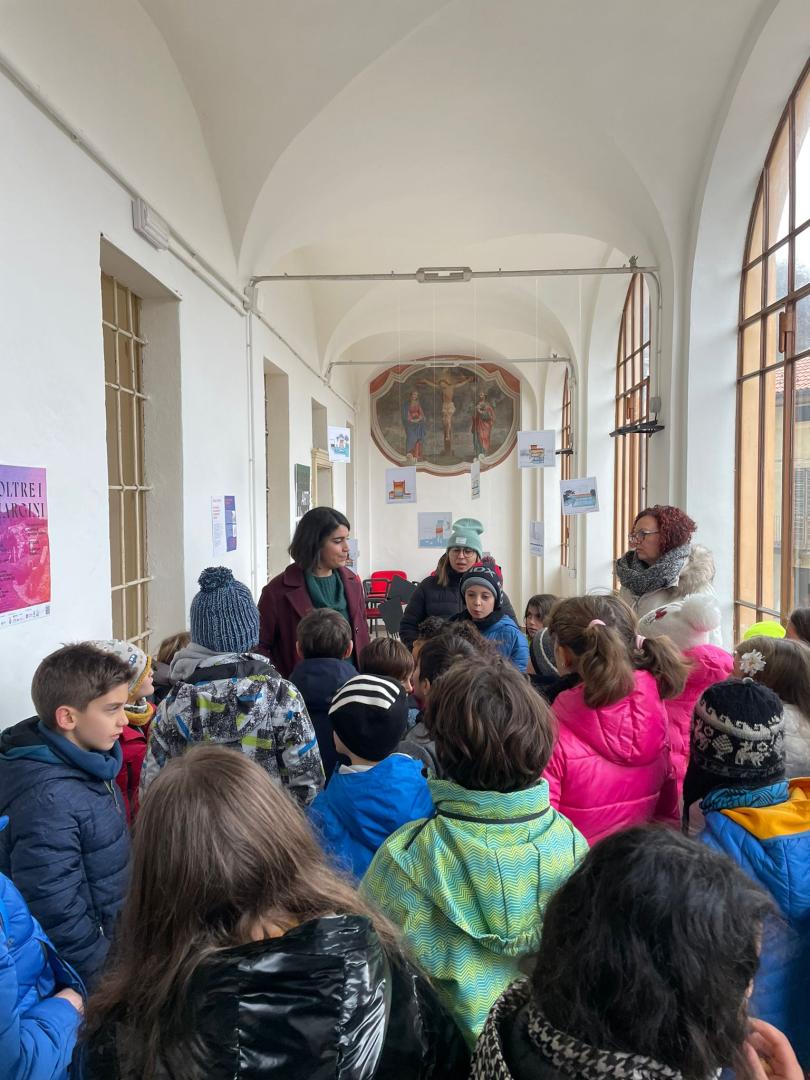Villa Santa Teresa Living Hub
Basic information
Project Title
Villa Santa Teresa Living Hub
Category
Regaining a sense of belonging
Project Description
Villa S.Teresa is a cultural experimentation center located in a historic villa and park. It welcomes artists and tourists for events that highlight civic engagement and environmental preservation. The villa hosts a variety of events, and the experimental park, abandoned until 2020, has been turned into an inclusive community space featuring biodiversity, such as pollinator plants, vermouth herb cultivation, and local apple trees. It provides educational opportunities for local schools.
Geographical Scope
Local
Project Region
Bioglio, Biella, Italy
Urban or rural issues
Mainly rural
Physical or other transformations
It refers to a physical transformation of the built environment (hard investment)
EU Programme or fund
No
Description of the project
Summary
Villa Santa Teresa Living Lab Project originates from the desire to redevelop a historical municipal heritage and return it to the community, thus transforming it into a common good. It takes the form of a cultural experimentation center, comprising the eighteenth-century historic villa and its climate-resilient experimental park. The villa is located in a marginal pre-Alpine area that has experienced depopulation over the decades. The Municipality of Bioglio is actively seeking to initiate projects to attract new residents, successfully setting the objective of transforming the villa into a cultural hub that engages small communities in the region through culture, local traditions, art, and innovation. Following the restoration process, the villa, adorned with frescoes and panoramic papier paint, has become a creative hub for workshops in craftsmanship, art, culinary traditions (the famous "bagna caoda" and communal dinners featuring local products), and institutional events. The park, designed to be resilient to future climatic conditions, houses the Local Apple Trees Library with over 15 varieties of indigenous plants, an agricultural area for traditional herbs used in vermouth production (created by Bioglio's Antonio Benedetto Carpano), a sanctuary for pollinators to promote biodiversity and local artisanal honey production, and shaded spaces with new tree plantings hosting concerts, theatrical performances, and cultural events during the summer. Park furnishings are self-constructed with community involvement, constituting an intergenerational project aimed at fostering a greater sense of belonging. Moreover, the park is accessible to persons with disabilities and conceived as a sensory park to stimulate all senses beyond sight. Areas for pollinators are established and maintained in collaboration with the elementary school and local associations overseeing their care. A collective care process is in place to revive the future of marginal Alpine territories.
Key objectives for sustainability
The project incorporates the values of environmental sustainability in the choice of certain architectural and landscape solutions. The building has been fully preserved, reducing demolitions and opting for an approach of adaptive reuse, thereby preserving its embodied carbon. Renovations have involved the use of natural materials typical of the local tradition, while minimizing waste. The interior lighting is LED-based, and the heating is electric, with the building becoming part of the municipal energy community of Bioglio in 2024.
The park project fully embodies the values of the New European Bauhaus, particularly expressing the concept of sustainability through various design choices. These include afforestation with new local trees, such as birch, to reduce overheating in relaxation areas, the creation of water drainage areas (raingardens), enhancing biodiversity through sections of pollinator plants to increase bee presence and the production of high-quality local honey. It also features a "library of apple trees" with rare native apple tree varieties to preserve their cultivation and local tradition, connected to the typical area production of mustards. There's also an area dedicated to cultivating herbs used for vermouth, a liqueur born in Bioglio by Benedetto Carpano.
The choice of untreated larch wood furniture, designed and self-constructed in collaboration with the community, is another sustainable aspect. Furthermore, the park includes strips of flower meadows and implements differentiated and reduced mowing practices to enhance biodiversity.
These nature-based solutions are site-specific tools that can be replicated in this environmental context. They not only reduce hydrogeological risk but also improve biodiversity quality, potentially contributing to the productivity of the area and the activation of local economies (e.g., honey, wine, aromatic herbs, apples, etc.).
The park project fully embodies the values of the New European Bauhaus, particularly expressing the concept of sustainability through various design choices. These include afforestation with new local trees, such as birch, to reduce overheating in relaxation areas, the creation of water drainage areas (raingardens), enhancing biodiversity through sections of pollinator plants to increase bee presence and the production of high-quality local honey. It also features a "library of apple trees" with rare native apple tree varieties to preserve their cultivation and local tradition, connected to the typical area production of mustards. There's also an area dedicated to cultivating herbs used for vermouth, a liqueur born in Bioglio by Benedetto Carpano.
The choice of untreated larch wood furniture, designed and self-constructed in collaboration with the community, is another sustainable aspect. Furthermore, the park includes strips of flower meadows and implements differentiated and reduced mowing practices to enhance biodiversity.
These nature-based solutions are site-specific tools that can be replicated in this environmental context. They not only reduce hydrogeological risk but also improve biodiversity quality, potentially contributing to the productivity of the area and the activation of local economies (e.g., honey, wine, aromatic herbs, apples, etc.).
Key objectives for aesthetics and quality
The project restored the 18th-century Santa Teresa villa, converting it into an inclusive hub for creativity, art, and tradition after years of abandonment. The entire building was renovated, preserving its 1746 frescoes and its identity. Inside, there is a room adorned with unique 19th-century Papier peint, offering a glimpse into aesthetics from the past.
First-floor rooms serve as flexible exhibition spaces with a permanent display of local artist Fulvio Platinetti's works. These spaces also host temporary exhibitions, engaging marginalized communities with diverse art forms.
The regeneration of this property has profoundly impacted the community, creating a cultural centre where none existed before. The villa hosts artist residencies, film screenings, theatrical events, food and wine experiences, and educational initiatives, often in collaboration with institutions like the Politecnico di Torino and The Euro-Mediterranean Centre for Climate Change (CMCC), enriching the local experience.
The park was designed to provide a sensory and perceptual experience, showcasing the natural beauty of the surroundings amid mountains and forests. A biophilic approach includes organic shapes, elegant tree species like birch, symbolizing Bioglio's identity, and continuously blooming plants for year-round appeal. The park also features a culturally versatile stage constructed from natural wood in collaboration with the community, promoting community engagement and a sense of belonging. This collaborative design and construction represent a replicable model for enhancing citizens' connection to their territory.
First-floor rooms serve as flexible exhibition spaces with a permanent display of local artist Fulvio Platinetti's works. These spaces also host temporary exhibitions, engaging marginalized communities with diverse art forms.
The regeneration of this property has profoundly impacted the community, creating a cultural centre where none existed before. The villa hosts artist residencies, film screenings, theatrical events, food and wine experiences, and educational initiatives, often in collaboration with institutions like the Politecnico di Torino and The Euro-Mediterranean Centre for Climate Change (CMCC), enriching the local experience.
The park was designed to provide a sensory and perceptual experience, showcasing the natural beauty of the surroundings amid mountains and forests. A biophilic approach includes organic shapes, elegant tree species like birch, symbolizing Bioglio's identity, and continuously blooming plants for year-round appeal. The park also features a culturally versatile stage constructed from natural wood in collaboration with the community, promoting community engagement and a sense of belonging. This collaborative design and construction represent a replicable model for enhancing citizens' connection to their territory.
Key objectives for inclusion
The project was designed to provide a new space for community cohesion, following a "design for all" approach.
The park offers accessibility to people with disabilities. Additionally, the choice of using medicinal herbs and fragrant plants allows visually impaired individuals to enjoy a sensory landscape beyond sight, engaging their other senses (taste, smell, touch, hearing). Within the park, two benches have been placed - a red one to support the gender equality battle and combat discrimination and violence against women, and a pink one to promote the prevention of female cancers.
The park and its biodiversity also embody the values of inclusion in a broader sense and serve as a safe platform, distant from various forms of discrimination.
The building is accessible through a ramp, and the redevelopment has made the first-floor rooms and an accessible bathroom available.
The management of the building is supported by the municipality, and the various cultural, educational, and artistic activities are funded through grants from local banking associations. The building is self-managed by the community and various associations that use this space. This form of management becomes a significant and exemplary element of a common goods management model.
The park offers accessibility to people with disabilities. Additionally, the choice of using medicinal herbs and fragrant plants allows visually impaired individuals to enjoy a sensory landscape beyond sight, engaging their other senses (taste, smell, touch, hearing). Within the park, two benches have been placed - a red one to support the gender equality battle and combat discrimination and violence against women, and a pink one to promote the prevention of female cancers.
The park and its biodiversity also embody the values of inclusion in a broader sense and serve as a safe platform, distant from various forms of discrimination.
The building is accessible through a ramp, and the redevelopment has made the first-floor rooms and an accessible bathroom available.
The management of the building is supported by the municipality, and the various cultural, educational, and artistic activities are funded through grants from local banking associations. The building is self-managed by the community and various associations that use this space. This form of management becomes a significant and exemplary element of a common goods management model.
Results in relation to category
The main outcome of this project has been the community of Bioglio reclaiming a splendid historical and landscape heritage, transforming it into an identity element where the entire community can gather and enjoy activities, works of art, exhibitions, and workshops that take place here throughout the year. The park is not only a cultural platform but also a place that embodies the agricultural culture of the region. The cultivated areas serve as a connection between innovation and local tradition, fostering a bond between the new generations rediscovering ancient knowledge passed down by their grandparents.
The success of the project is evident in the creation of a comprehensive annual cultural program, with spaces dedicated to all forms of art and local events such as craft markets, Christmas markets, farmers' markets, the grape harvest festival, and other traditional events. This has led to an increase in visitors to this area, reaching over 5000 annual visitors, considering that the municipality of Bioglio has fewer than 1000 inhabitants.
Media impact, thanks to coverage in the local press, has made Bioglio known for its quality of life and environment, attracting new residents. The space of the villa has allowed for the hosting of young people from all over Italy and beyond for music composition workshops, international artist residencies, and has become an open space for everyone to connect with the nature and biodiversity of the area.
The success achieved with regeneration initiatives has enabled the acquisition of new funds from public calls for culture and the environment.
The success of the project is evident in the creation of a comprehensive annual cultural program, with spaces dedicated to all forms of art and local events such as craft markets, Christmas markets, farmers' markets, the grape harvest festival, and other traditional events. This has led to an increase in visitors to this area, reaching over 5000 annual visitors, considering that the municipality of Bioglio has fewer than 1000 inhabitants.
Media impact, thanks to coverage in the local press, has made Bioglio known for its quality of life and environment, attracting new residents. The space of the villa has allowed for the hosting of young people from all over Italy and beyond for music composition workshops, international artist residencies, and has become an open space for everyone to connect with the nature and biodiversity of the area.
The success achieved with regeneration initiatives has enabled the acquisition of new funds from public calls for culture and the environment.
How Citizens benefit
Citizens were actively engaged in every phase of the park project, which was designed in collaboration with the community and local associations (Proloco Bioglio, Bioglio Volunteer Association, Italian Alpine Association Bioglio). Co-design workshops were conducted, culminating in the creation of wooden furniture and the planting of flower beds, with the participation of local elementary schools and the Politecnico di Torino
The benefits for the community are numerous: the establishment of a versatile new park where people can spend their days, engage in collective gardening, attend performances during the rich summer cultural calendar, and participate in gastronomic activities that promote traditional products like honey, wine, and Vermouth through community lunches and dinners. The park also hosts collective art and local craftsmanship exhibitions, farmers' markets, and local producer stalls within the villa-museum, as well as festivals and music concerts organized by the associations that embrace this new common asset. The park and the villa have also become platforms that can be used by citizens to organize private events such as parties, ceremonies like weddings, and tasting events.
Villa Santa Teresa has truly become the new cultural hub for the town and the region, attracting over 5,000 visitors per year, despite the small population of around 900 residents in this municipality.
The creation of the park, with its rich biodiversity, has facilitated educational programs with schools to teach the value of biodiversity and the impacts of climate change. In the case of agricultural high schools, it provides opportunities for plant studies and pruning courses, making it an attractive focal point. Similar projects, if implemented in the region, could become attractive hubs for regenerating the area.
The benefits for the community are numerous: the establishment of a versatile new park where people can spend their days, engage in collective gardening, attend performances during the rich summer cultural calendar, and participate in gastronomic activities that promote traditional products like honey, wine, and Vermouth through community lunches and dinners. The park also hosts collective art and local craftsmanship exhibitions, farmers' markets, and local producer stalls within the villa-museum, as well as festivals and music concerts organized by the associations that embrace this new common asset. The park and the villa have also become platforms that can be used by citizens to organize private events such as parties, ceremonies like weddings, and tasting events.
Villa Santa Teresa has truly become the new cultural hub for the town and the region, attracting over 5,000 visitors per year, despite the small population of around 900 residents in this municipality.
The creation of the park, with its rich biodiversity, has facilitated educational programs with schools to teach the value of biodiversity and the impacts of climate change. In the case of agricultural high schools, it provides opportunities for plant studies and pruning courses, making it an attractive focal point. Similar projects, if implemented in the region, could become attractive hubs for regenerating the area.
Physical or other transformations
It refers to a physical transformation of the built environment (hard investment)
Innovative character
The innovation in the project compared to traditional practices in the area has been the establishment of a project governance structure that involved a multitude of stakeholders, effectively addressing the needs of both the community and its residents.
The creation of a project, developed in collaboration with industry experts and institutions like the Polytechnic, provided a comprehensive roadmap for identifying specific goals and investing funds in a highly targeted manner. The identified objectives revolve around the appreciation of the region's natural beauty, fostering a deeper connection between the citizens and the place, and rediscovering ancient traditions related to rural life, such as agriculture, viticulture, and apiculture.
Simultaneously, the adaptability of the location, both indoors and outdoors, has allowed Villa Santa Teresa to function as a flexible hub. Here, it is the users who act as the driving force, organizing exhibitions, workshops, performances, and more. This empowers the local community, various associations, and young creatives to express themselves and initiate their own cultural projects, which, in turn, attract even tourist flows.
Another innovative aspect is the application of nature-based solutions in a public space that serves the dual purpose of agricultural productivity for the community and biodiversity conservation. This approach ensures that the ecosystem services generated are visible to the citizens, encouraging an environmentally conscious approach in line with the principles of the 2030 Agenda and the green transition.
The creation of a project, developed in collaboration with industry experts and institutions like the Polytechnic, provided a comprehensive roadmap for identifying specific goals and investing funds in a highly targeted manner. The identified objectives revolve around the appreciation of the region's natural beauty, fostering a deeper connection between the citizens and the place, and rediscovering ancient traditions related to rural life, such as agriculture, viticulture, and apiculture.
Simultaneously, the adaptability of the location, both indoors and outdoors, has allowed Villa Santa Teresa to function as a flexible hub. Here, it is the users who act as the driving force, organizing exhibitions, workshops, performances, and more. This empowers the local community, various associations, and young creatives to express themselves and initiate their own cultural projects, which, in turn, attract even tourist flows.
Another innovative aspect is the application of nature-based solutions in a public space that serves the dual purpose of agricultural productivity for the community and biodiversity conservation. This approach ensures that the ecosystem services generated are visible to the citizens, encouraging an environmentally conscious approach in line with the principles of the 2030 Agenda and the green transition.
Disciplines/knowledge reflected
One of the key figures in this transformation is the cultural mediator, embodied by the mayor (who happens to be an educator by training). The mayor adeptly managed the diverse needs of the citizens and identified the necessary stakeholders to secure funding and develop the project in synergy with the local community and associated organizations.
The presence of a professional with project management skills proved to be essential in accessing funding that provided the financial support needed for various project activities, including workshops, seminars, culinary events, theatrical performances, and more.
Of course, the role of an architect/researcher was pivotal in devising innovative and experimental projects that seamlessly integrated the themes of territorial regeneration, sustainable development, and the promotion of local identity and citizenship.
The presence of a professional with project management skills proved to be essential in accessing funding that provided the financial support needed for various project activities, including workshops, seminars, culinary events, theatrical performances, and more.
Of course, the role of an architect/researcher was pivotal in devising innovative and experimental projects that seamlessly integrated the themes of territorial regeneration, sustainable development, and the promotion of local identity and citizenship.
Methodology used
The methodology of the Project is structured as follows:
1. Identification of the needs of the local community and the desire to reinvigorate a public asset to which the municipality is closely tied.
2. Initiation of participatory processes involving citizens and associations seeking to embark on collaborative project development. These associations are dedicated to the promotion of the local territory and traditional identity, such as pro-local associations, farmers and viticulturists associations, and associations of local producers, including honey and vegetable producers, among others.
3. Identification of funding opportunities (from European, regional, and private foundation grants) for the reactivation of the asset.
4. Interdisciplinary design involving experts in co-design, civic engagement, nature-based solutions, and environmental education.
5. Formulation of park project strategies encompassing resilience to climate change, local agricultural production, biodiversity enhancement in pollinator areas, and outdoor cultural activity spaces (e.g., event stages).
6. Creation of a cultural calendar.
7. Initiation of an international artist residency program (2023).
The approach used in the design process follows the principles of Design for All and Biophilic Design.
1. Identification of the needs of the local community and the desire to reinvigorate a public asset to which the municipality is closely tied.
2. Initiation of participatory processes involving citizens and associations seeking to embark on collaborative project development. These associations are dedicated to the promotion of the local territory and traditional identity, such as pro-local associations, farmers and viticulturists associations, and associations of local producers, including honey and vegetable producers, among others.
3. Identification of funding opportunities (from European, regional, and private foundation grants) for the reactivation of the asset.
4. Interdisciplinary design involving experts in co-design, civic engagement, nature-based solutions, and environmental education.
5. Formulation of park project strategies encompassing resilience to climate change, local agricultural production, biodiversity enhancement in pollinator areas, and outdoor cultural activity spaces (e.g., event stages).
6. Creation of a cultural calendar.
7. Initiation of an international artist residency program (2023).
The approach used in the design process follows the principles of Design for All and Biophilic Design.
How stakeholders are engaged
The main actor in this project was the Municipality of Bioglio, which successfully established a collaborative management model involving third-sector organizations, associations, the tourism sector, schools, universities, banking institutions, and private citizens. The entities involved in creating the project included local and national organizations (such as the Compagnia di San Paolo) and European ones, like GAL Montagne Biellesi. Local Action Groups (Gruppi di Azione Locale) originated within the European Community initiative Leader (Liaison Entre Actions de Développement de l’Economie Rurale), launched in 1988 to promote the development of disadvantaged rural areas through a bottom-up approach.
Stakeholders were engaged through the Municipality's proposal to repurpose a common asset, the villa and its park. Winning grants for the development of marginal territories, such as those promoted by GAL Montagne Biellesi and banking foundations like the Cassa di Risparmio di Biella Foundation and the Compagnia di San Paolo Foundation in Turin, allowed for collaboration with these entities, which were involved in all project phases. Their support was crucial in initiating a bottom-up process that led to the creation of a new focal point for Bioglio. Their level of involvement was significant as they believed in the initiative and funded a portion of the project (with the remainder funded by the municipality).
The Polytechnic University of Turin participated as the coordinator of co-design activities in collaboration with associative entities like Artieri. Other organizations, such as cultural associations promoting the region, played a key role in this bottom-up process and initiated a calendar of events in collaboration with local producers, artisans, international artists, theatre companies, and many other actors. Their level of involvement has been and continues to be high as they drive cultural activities forward.
Stakeholders were engaged through the Municipality's proposal to repurpose a common asset, the villa and its park. Winning grants for the development of marginal territories, such as those promoted by GAL Montagne Biellesi and banking foundations like the Cassa di Risparmio di Biella Foundation and the Compagnia di San Paolo Foundation in Turin, allowed for collaboration with these entities, which were involved in all project phases. Their support was crucial in initiating a bottom-up process that led to the creation of a new focal point for Bioglio. Their level of involvement was significant as they believed in the initiative and funded a portion of the project (with the remainder funded by the municipality).
The Polytechnic University of Turin participated as the coordinator of co-design activities in collaboration with associative entities like Artieri. Other organizations, such as cultural associations promoting the region, played a key role in this bottom-up process and initiated a calendar of events in collaboration with local producers, artisans, international artists, theatre companies, and many other actors. Their level of involvement has been and continues to be high as they drive cultural activities forward.
Global challenges
The Project addresses some of the key global challenges:
1. Climate Change: The park project has been designed to be climate-resilient by incorporating nature-based solutions to mitigate the extreme impacts of weather events such as floods and heat islands. This design approach ensures year-round usability of the space. The diverse biodiversity, including agricultural elements, enhances the park's resilience. The project also incorporates organic waste recovery to reduce emissions and create a closed-loop system within the park.
2. Public Health: The Villa Park becomes a space for relaxation and, more importantly, a place to reconnect with nature, reducing stress and promoting mental well-being. The installation of a pink bench serves as a supportive element for raising awareness of women's health issues, including cancer prevention. The park itself is a platform for promoting healthy lifestyles, fostering a deep connection with nature, and encouraging organic produce consumption.
3. Depletion of Natural Resources: The project aims to valorize natural resources by implementing water recovery systems and drip irrigation to reduce water consumption. The use of mulch also helps conserve water resources. New plantings, some of which are productive, are introduced to stimulate local microeconomies.
4. Environmental Sustainability: Architectural choices within the project focus on preserving existing structures, minimizing land use, and enhancing energy efficiency through the installation of insulated roofing. The park incorporates water recovery and conservation systems, while the diverse plant life contributes to increasing biodiversity and creating spaces for human-nature interaction.
These project strategies not only address global challenges but also exemplify a commitment to sustainability, resilience, public well-being, and the efficient use of resources.
1. Climate Change: The park project has been designed to be climate-resilient by incorporating nature-based solutions to mitigate the extreme impacts of weather events such as floods and heat islands. This design approach ensures year-round usability of the space. The diverse biodiversity, including agricultural elements, enhances the park's resilience. The project also incorporates organic waste recovery to reduce emissions and create a closed-loop system within the park.
2. Public Health: The Villa Park becomes a space for relaxation and, more importantly, a place to reconnect with nature, reducing stress and promoting mental well-being. The installation of a pink bench serves as a supportive element for raising awareness of women's health issues, including cancer prevention. The park itself is a platform for promoting healthy lifestyles, fostering a deep connection with nature, and encouraging organic produce consumption.
3. Depletion of Natural Resources: The project aims to valorize natural resources by implementing water recovery systems and drip irrigation to reduce water consumption. The use of mulch also helps conserve water resources. New plantings, some of which are productive, are introduced to stimulate local microeconomies.
4. Environmental Sustainability: Architectural choices within the project focus on preserving existing structures, minimizing land use, and enhancing energy efficiency through the installation of insulated roofing. The park incorporates water recovery and conservation systems, while the diverse plant life contributes to increasing biodiversity and creating spaces for human-nature interaction.
These project strategies not only address global challenges but also exemplify a commitment to sustainability, resilience, public well-being, and the efficient use of resources.
Learning transferred to other parties
The replicability features of the project are linked to marginal contexts and mountainous territories. This process can be replicated wherever there is a lack of a central hub where the local community can identify itself, a characteristic often found in these regions. In this case, this condition has led to identifying a common asset as a catalyst for processes aimed at reconnecting with local historical heritage and traditions. The historical asset has been entrusted to third-sector entities, associations, and citizens who have transformed this place into their own asset to be valorized and revived, both concerning the villa and the park.
From an economic standpoint, the model is virtuous and replicable because it is based on participation in calls for proposals and events that allow for the collection of funds for the maintenance of the structure. The co-participatory management model becomes successful and is recommended in community projects in these rural contexts, especially for the maintenance of green spaces.
Replicable elements for improving environmental quality include the choice of nature-based solutions: areas with pollinator plants, agricultural areas for the valorization of local products, and reforested areas for carbon storage. Replicable processes encompass collaboration between public entities and schools to activate educational processes based on environmental education and the rediscovery of ancient artisanal traditions (such as the production of typical Bioglio apple mustards, honey production, ancient wine production, and apple cultivation on terraces).
From an economic standpoint, the model is virtuous and replicable because it is based on participation in calls for proposals and events that allow for the collection of funds for the maintenance of the structure. The co-participatory management model becomes successful and is recommended in community projects in these rural contexts, especially for the maintenance of green spaces.
Replicable elements for improving environmental quality include the choice of nature-based solutions: areas with pollinator plants, agricultural areas for the valorization of local products, and reforested areas for carbon storage. Replicable processes encompass collaboration between public entities and schools to activate educational processes based on environmental education and the rediscovery of ancient artisanal traditions (such as the production of typical Bioglio apple mustards, honey production, ancient wine production, and apple cultivation on terraces).
Keywords
Rural regeneration
Social Cohesion
Local Creativity and Craftsmanship
Revitalizing Marginal Areas
agricultural ancient traditions

